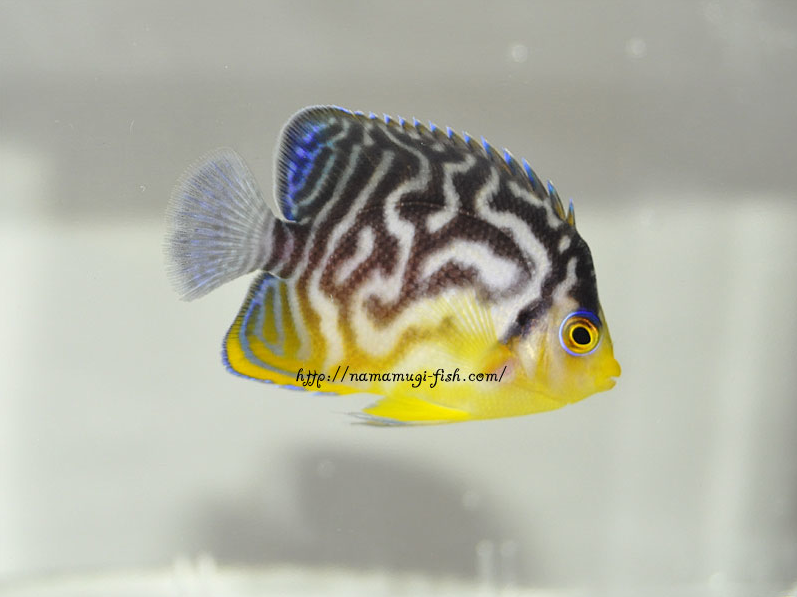
Few days ago, we shared with you the world’s newest Paracentropyge hybrid to hit the reefing scene. This natural hybrid between the two Indo-pacific Paracentropyge angels (P. venustus and P. multifasciata) is possibly the most stunning creations mother nature has to offer. The last remaining member to this small genus is the illustrious Peppermint Angelfish, flung all the way to the other end of the Pacific, and down a few hundred meters deep. While the Peppermint Angel is arguably the most colourful in the genus, the hybrid produced by the two more humble species can give it a run for its money any day of the week.


If you are feeling rich, this exciting fish is now offered for sale in Namamugi-fish, in Japan, at a price of 780,000 japanese Yen (8.2k USD). What goes on genetically to transform the regimented stripes in P. multifasciata into this complex maze like arrangement of curves and bends is something of a mystery. This is the third** hybrid to enter the trade in history. The first, pictured one the left, arrived more than 20 years ago and just like this one, is every bit as gorgeous.
The second piece to show up in the trade made its appearance in 2008, where it landed in Japan and was sold to an ardent fish lover and collector. That piece took the reefing world by storm and through that single specimen, the husbandry and behaviour of this hybrid was documented. It, unlike its parents, adapted rather well to captivity and took well to prepared food. It was also reported to be aggressive even, which is the exact opposite of its shy shade loving parents. Although to base one’s impression on a single individual is never ideal in science, it at least, gave us a little bit of insight to the life of a fish that almost everyone thought would be doomed just based solely on its parental lineage.

All three pieces that entered the trade came from the reefs of Philippines, where P. venustus and P. multifasciata are found. We hope to keep track on the third and newest one to enter the trade and see if the behaviour is similar to the one before.
** There is another specimen pictured in Scott Michael’s book titled Angelfishes & Butterflyfishes. This specimen, unknown to us if it was photographed in the wild or the aquarium, shows the fish with its right side markings completely different from the above three mentioned. Wether or not it is another specimen is unclear, but if it is, then the total number documented to date would be four.



